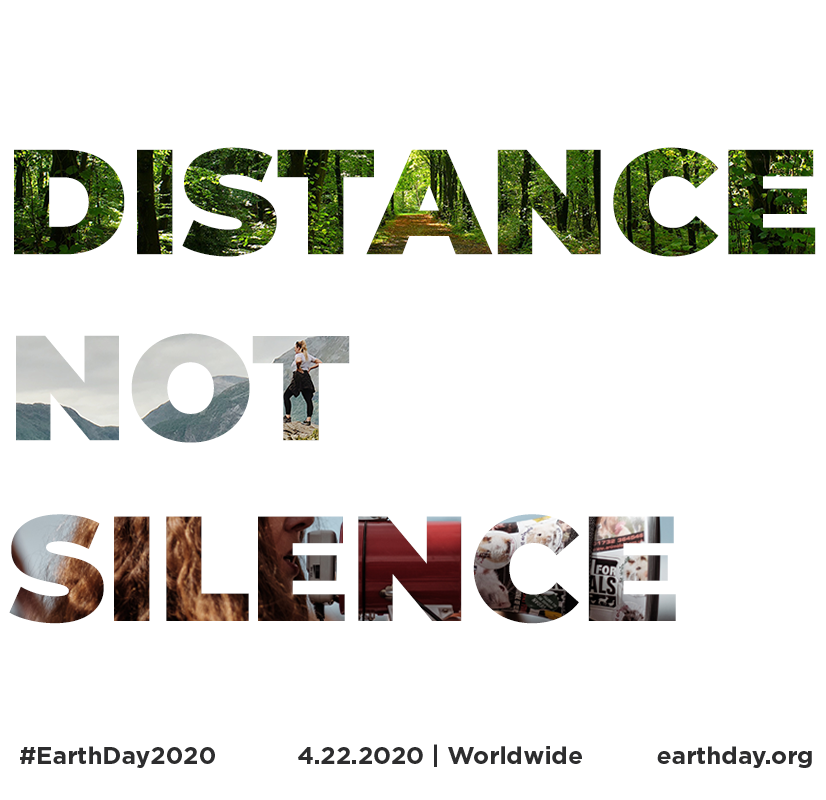50 years of conservation pass by in quarantine
Just six months ago, life was, for the most part, normal. Climate change and the role of government in environmental protection was one of the biggest issues up for debate amid the upcoming 2020 presidential election. Additionally, as more and more people debated the role of government in curbing climate destruction, the Earth Day movement was preparing to celebrate its 50th anniversary. This year’s theme, climate activism, was a response to these debates. According to the movement’s official website, “Climate change represents the biggest challenge to the future of humanity and the life-support systems that make our world habitable.”
What makes Earth Day unique is that each year, the Earth Day Movement organizes ways for people to get involved in the environmental movement; collecting donations, organizing protests, volunteering for projects and educating others are some of the ways that millions of people have been able to celebrate it in the past. Earth Day is a holiday that encourages celebrants to take action to protect the environment.
However, this year’s celebrations were a bit different. With the world practicing social distancing because of the COVID-19 outbreak, gatherings for these types of activism were impossible this year. For Earth Day’s 50 year anniversary, rather than collect donations and organize beach cleanups, celebrants of the holiday were invited to participate in three ways, all of which were digital. Graphics, tweets and other educational resources were available for social media outreach. “Apart but connected,” “Our planet, our health,” and “Heal her” are some of the slogans used to remind the world that in the midst of this pandemic, we are still facing a global climate crisis that has to be addressed. Social distance-friendly events such as live-streams and solo cleanups were also completed around the world.
First and foremost, Earth Day was created to be a day for raising awareness and promoting eco-education in the face of decades of climate destruction. After World War II, many Americans began to face the consequences of years of heavy industrialism and pollution. Several water and air quality control acts passed through Congress in the next few decades in response to the growing number of people affected by toxicity in the air and water. With the rise of the environmental movement in the 1960s, eco-mindedness was becoming more and more common in the U.S. Books like Silent Spring by Rachel Carson, a case study on the harmful effects of the pesticide DDT on human health, and The Quiet Crisis, U.S. Secretary of the Interior Stewart Udall’s novel outlining the need for environmental activism, gained popularity and aided in bringing environmental issues to the forefront of American politics.
Earth Day began in America on April 22, 1970 as a way to broadcast the need for environmental protection and outreach. The holiday was originally meant to encourage student involvement in climate activism—Wisconsin Senator Gaylord Nelson had noticed the role of students in the anti-war movement in the 60s and sought to rally the same energy towards awareness and education of environmental issues. At the senator’s direction, activist Denis Hayes hosted teach-ins at colleges and universities in order to bolster support for the movement. After Earth Day’s first success, the holiday was quickly marketed nationwide as a unifying reminder of the importance of protecting the Earth from human destruction. Twenty years later, Hayes coordinated a global celebration of Earth Day; after this, President Bill Clinton honored Senator Nelson for founding the first Earth Day with the Presidential Medal of Freedom.
Fifty years since the modern environmental movement began, people have become more conscious of the importance of protecting the planet in order to keep humanity healthy. Global conventions, laws passed and continued activism demonstrate that since the original Earth Day in 1970, there is more widespread regard for the impact we have on our environment. Student activism still continues, as do the issues surrounding climate change will still need to be addressed post-COVID-19.






























